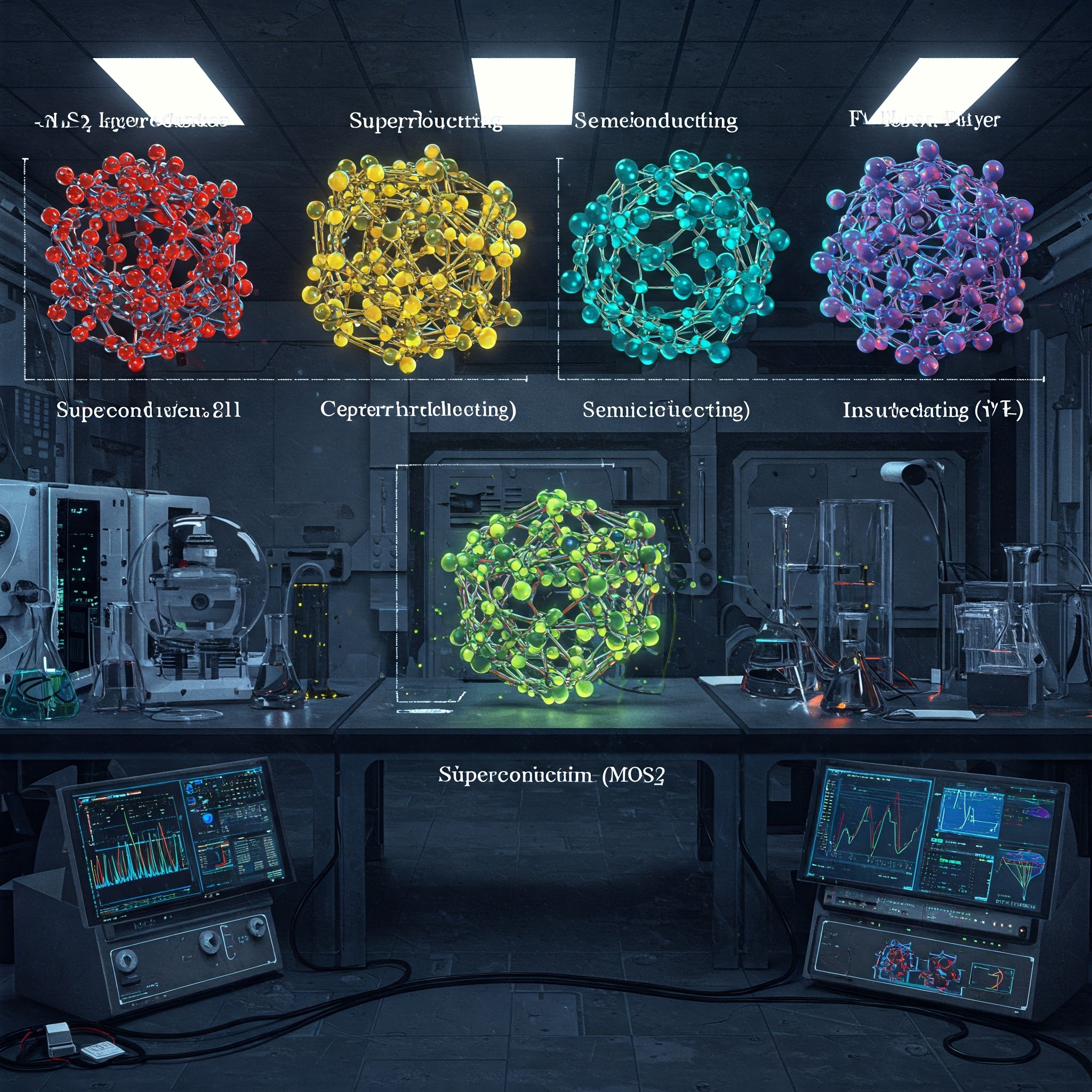A Quantum Leap in Material Science Imagine a single material that can behave as a superconductor, metal, semiconductor, or insulator, all depending on how its atoms are arranged. This is not science fiction but a reality made possible by molybdenum disulfide (MoS₂), a remarkable two-dimensional (2D) material. Researchers have discovered that MoS₂ can exhibit four distinct electronic behaviors, making it a groundbreaking platform for adaptive electronics, quantum computing, and energy-efficient technologies.
What is MoS₂?
An Overview Molybdenum disulfide is a transition metal dichalcogenide (TMD) with a layered structure similar to graphite. Each layer consists of a plane of molybdenum atoms sandwiched between two planes of sulfur atoms. These layers are held together by weak van der Waals forces, allowing them to be peeled down to single or few layers for use in nanoscale applications.
The Four Faces of MoS₂: Understanding its Electronic Versatility
- Semiconducting Behavior
- The most commonly known phase of MoS₂ is semiconducting, particularly the 2H phase.
- This makes it useful in field-effect transistors (FETs), photodetectors, and flexible electronics.
- Its direct bandgap in monolayer form allows for efficient light absorption and emission, ideal for optoelectronic devices.
- Metallic Phase
- The 1T and 1T’ phases of MoS₂ exhibit metallic behavior.
- This property is key for interconnects in electronic circuits and catalysis applications.
- Phase engineering techniques like lithium intercalation can induce this transformation.
- Superconductivity
- Under certain conditions, such as doping or applying pressure, MoS₂ shows superconducting characteristics.
- Superconductivity in 2D materials is crucial for quantum computing, where lossless current flow is essential.
- The ability to toggle between normal and superconducting states adds functionality to quantum devices.
- Insulating Properties
- MoS₂ can also act as an insulator under specific structural configurations or external stimuli.
- This trait is important for creating switchable devices with defined “on” and “off” states.
Atomic Engineering: How the Transitions Happen The key to MoS₂’s versatility lies in atomic-scale engineering. Techniques include:
- Phase Transition Methods: Such as chemical exfoliation, strain engineering, and electrostatic doping.
- External Stimuli: Temperature, pressure, and electric fields can induce phase changes.
- Substrate Interactions: Choice of substrate affects the electronic properties of MoS₂ layers.
Applications: A New Era of Multi-Functional Devices
- Adaptive Electronics
- Devices can self-modulate their electronic properties depending on the environment.
- Ideal for wearable tech, sensors, and dynamic circuitry.
- Quantum Computing
- Superconducting and insulating phases can be integrated into quantum bits (qubits).
- MoS₂’s phase change abilities offer a platform for creating reconfigurable quantum circuits.
- Energy-Efficient Technologies
- Reduced energy consumption in switches and transistors due to precise control over conductive states.
- Potential use in thermoelectric materials and next-generation solar cells.
- Flexible and Wearable Devices
- Its mechanical flexibility combined with electronic versatility suits it well for bendable electronics.
Challenges and Future Directions
- Scalability: Synthesizing large, defect-free MoS₂ sheets with controlled phases.
- Stability: Maintaining desired electronic properties over time and under environmental stress.
- Integration: Incorporating MoS₂ into existing semiconductor manufacturing processes.
- Standardization: Developing consistent methods for phase detection and control.
Conclusion
A Material Ahead of Its Time Molybdenum disulfide stands at the frontier of materials science, offering a single-platform solution for diverse technological needs. Its ability to transition between multiple electronic states paves the way for devices that are smarter, faster, and more energy-efficient. As research continues, MoS₂ may well be the cornerstone of a new generation of multifunctional electronic systems.
Key Takeaways
- MoS₂ can behave as a semiconductor, metal, superconductor, or insulator depending on atomic structure.
- Enables the creation of adaptive and reconfigurable electronic devices.
- Has significant potential in quantum computing, flexible electronics, and energy-efficient technologies.
- Future research will focus on scalability, integration, and long-term stability.









+ There are no comments
Add yours